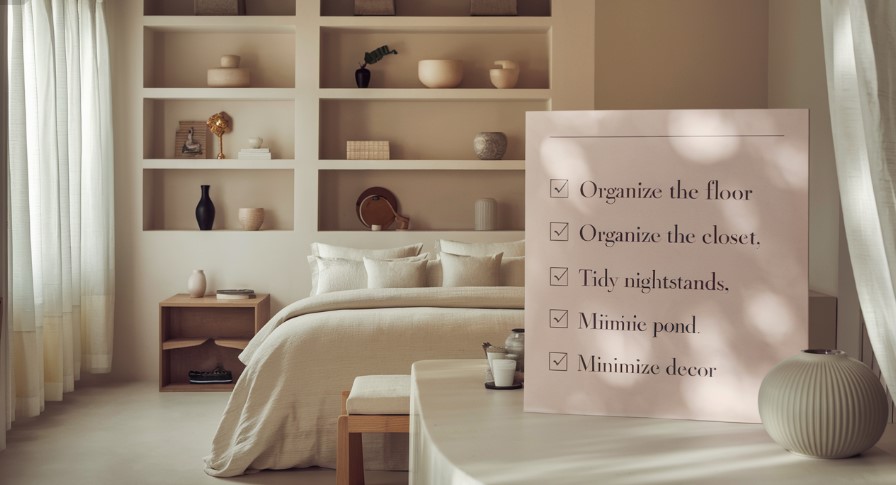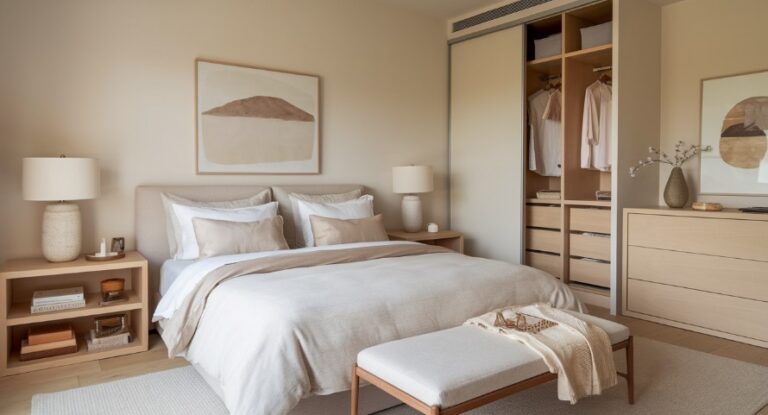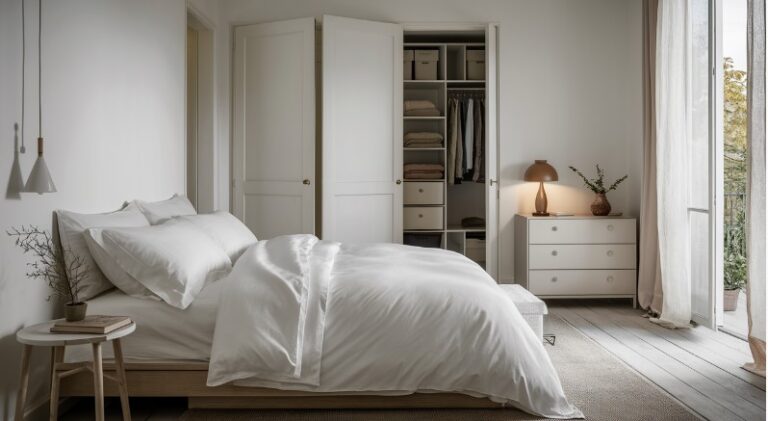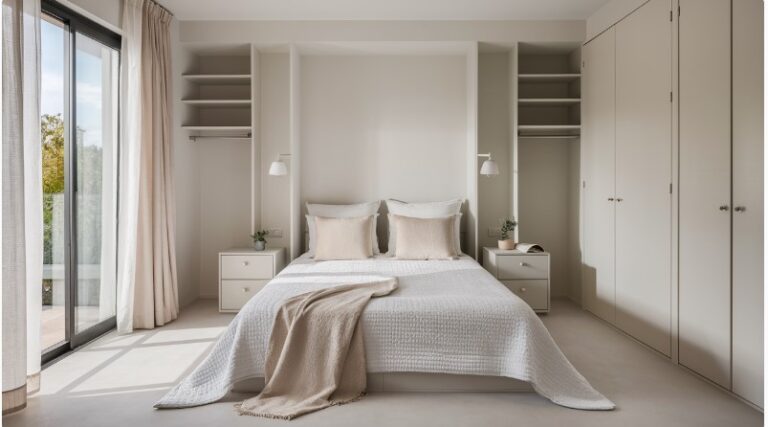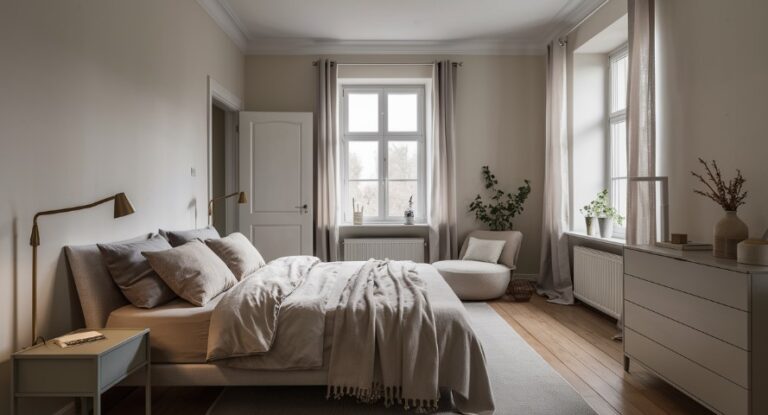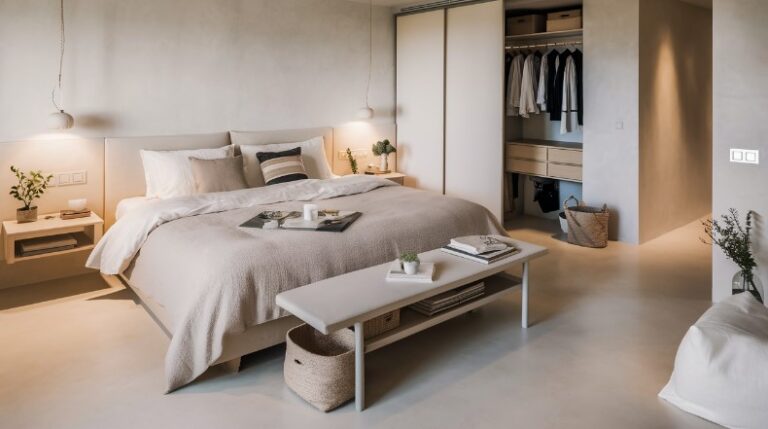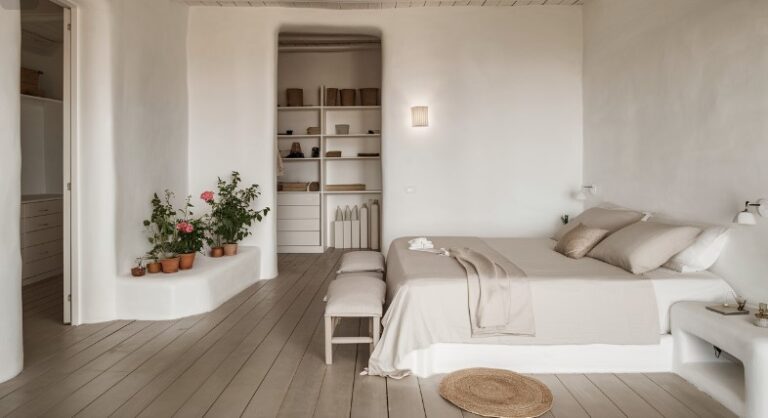Decluttering Bedroom Checklist: A Step-by-Step Guide to a Peaceful Sleep Space
Our bedrooms are often our first refuge from life’s chaos. However, clutter can disrupt sleep and harm health.
So, I made a “Decluttering Bedroom Checklist.” It’s simple. It turns your room into a calm haven.
First, tidy up. Then, organize your clothes. Use space wisely.
Let’s aim for ultimate peace in your bedroom. You’ll wake up ready to tackle the day. A tidy room brings better sleep and more joy.
Decluttering Bedroom Checklist
1. Prepare for Decluttering
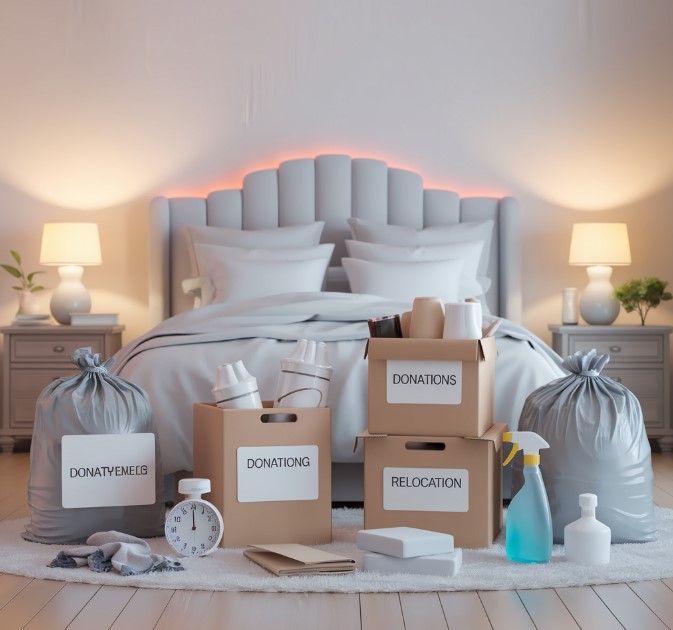
Before decluttering your bedroom, prepare first. Gather trash bags for unwanted items. Use boxes for donations or items to move. Keep cleaning supplies nearby.
These tools make the process easier and help you focus. Then, set a timer for your session. Pick 15 minutes to an hour. This avoids interruptions and helps manage time.
Breaking the task into smaller parts prevents feeling overwhelmed. For a calming atmosphere, play soothing music or ambient sounds. This makes decluttering less stressful and your bedroom more peaceful.
Ready to start? Let’s refresh your sanctuary!
2. Clear Clutter from Surfaces
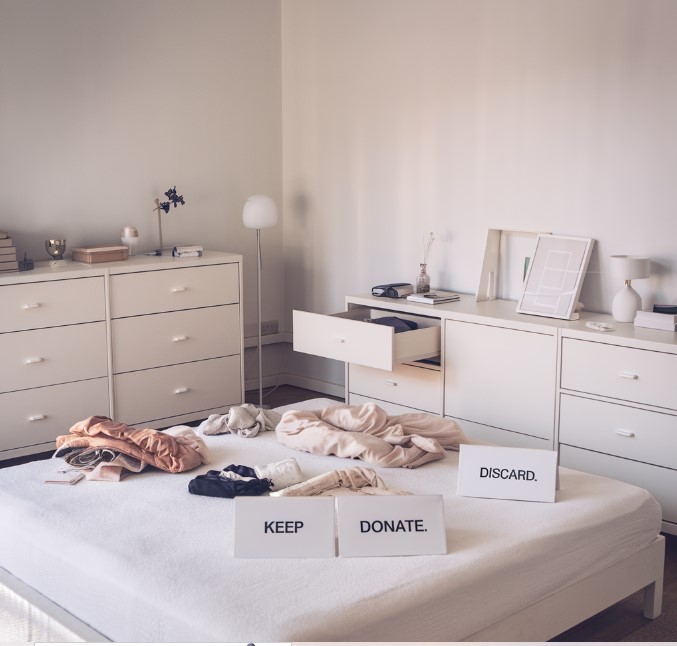
Start by emptying dressers, nightstands, and shelves. This step is crucial. It clears clutter and shows your bedroom’s potential.
Sort items into three piles: keep, donate, and toss. Be honest. Keep what you need, help others with what they can use, and throw away the rest.
Then, adopt the “one-in, one-out” rule. For every new item, get rid of one. This keeps your space organized and prevents clutter.
Following this rule keeps surfaces tidy and functional. It creates a peaceful space for sleep.
3. Tackle Clothing and Closet
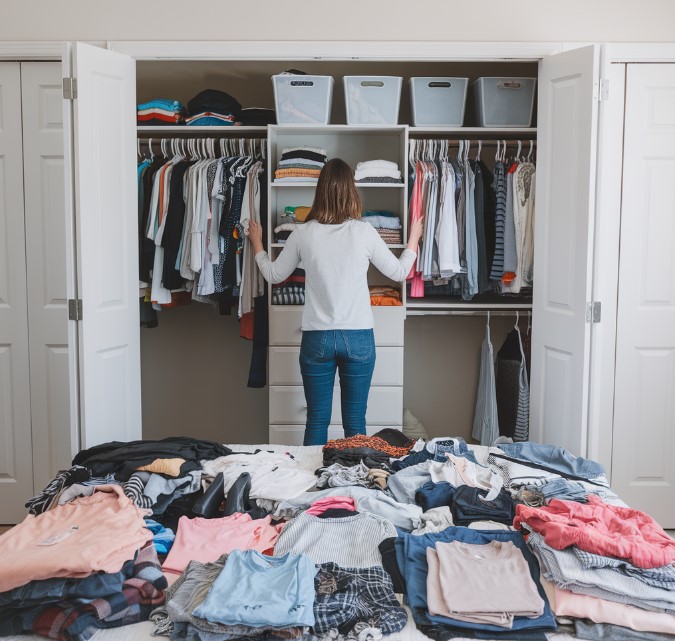
First, empty your closet. Sort clothes into tops, bottoms, dresses, and outerwear. This step shows what you have and what’s unnecessary.
Next, make piles for donations or trash. Include items that don’t fit, are outdated, or worn out. Be honest about what you wear. Keep only what’s needed.
Then, organize the remaining clothes by type and usage. Group similar items, like pants and shirts. Considering the season.
Store off-season clothes in bins or high shelves. This keeps daily options accessible.
This method maximizes space and simplifies outfit selection. It leads to a more organized, peaceful bedroom.
4. Address the “Floordrobe”
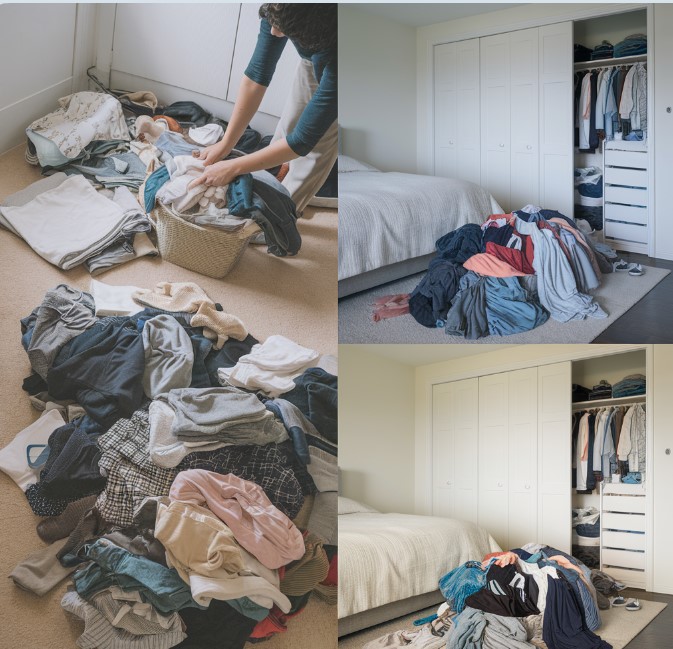
A “floordrobe” is a pile of clothes on the floor which can easily can ruin your bedroom.
Fixing this is important for good sleep. First, gather all your clothes. Make three piles: clean, dirty, and for donation or trash.
This helps you see what you have and what to do next.
Then, put away clean clothes. If your storage is full, consider reducing your clothes.
Next, place dirty clothes in the laundry basket and set a washing schedule.
Decide what to donate or throw away.
Dealing with the floordrobe, helps to clears your floor and brings peace to your bedroom. It’s vital for restful sleep.
5. Declutter Bedding and Linens
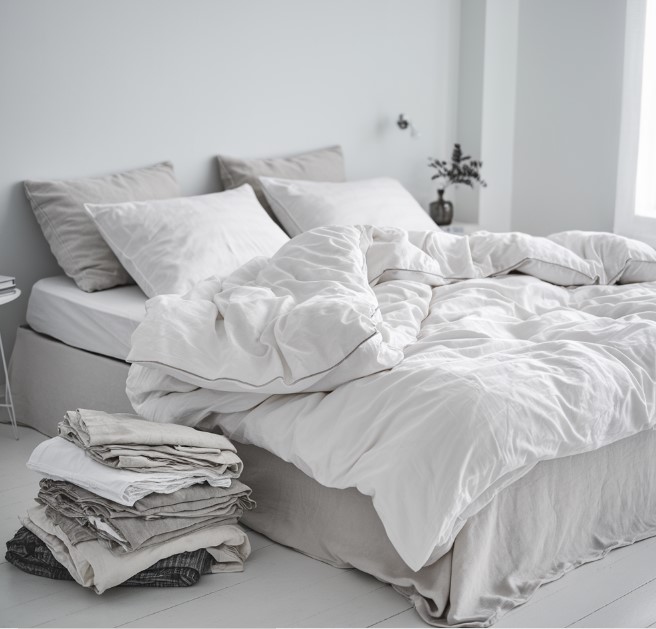
A tidy bed is the cornerstone of a peaceful bedroom. Begin by removing all bedding and linens. Wash them thoroughly to refresh their feel and scent.
As you do this, take stock of your current collection. Identify any old, worn-out, or seldom-used items. They might include frayed sheets, pillowcases, or old blankets. They no longer contribute to your comfort.
Next, consider donating linens in good condition that you no longer need or use. Many shelters and charitable organizations gladly accept these items.
For items beyond repair or too worn out, discard them responsibly. If possible, recycle textiles. If not, dispose of them properly.
Streamlining your bedding and linens creates space for sleep-enhancing items. It also makes your bedroom more organized and attractive.
This simple step can greatly improve your sleep space. It will make it more inviting and restful.
6. Minimize Decor and Accessories
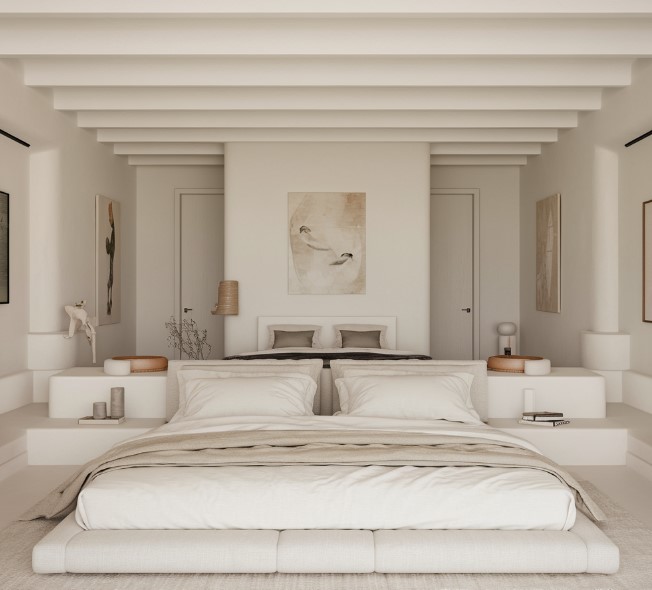
To create a calm, clutter-free bedroom, cut decor and accessories. Begin by removing any non-essential decor items.
This includes anything that doesn’t serve a functional purpose or bring you joy. Excessive decor can create visual clutter, making the room feel chaotic and distracting.
Instead, take a minimalist approach. Keep only items that genuinely enhance your space.
For instance, choose a few pieces of artwork that you love rather than covering every wall. Opt for simple, elegant furnishings that provide comfort without overwhelming the room.
Check if each item helps create the peaceful atmosphere you want. Focus on items that are sentimental or happy. Store or donate the rest.
Careful decor choices can create a calm, open space. It will promote relaxation and restful sleep.
Aim to create a bedroom that’s a calm, distraction-free retreat.
7. Organize and Maintain
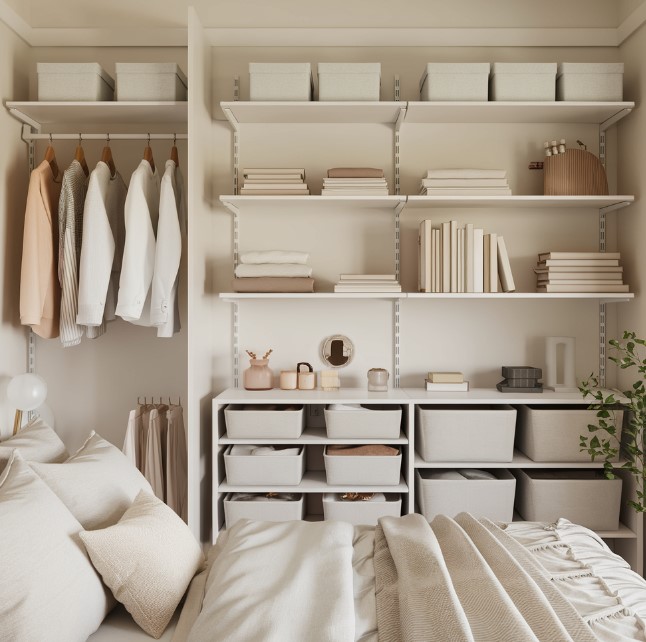
Start by grouping items. Put similar things together, like clothes, books, and accessories. Each group needs a spot.
Use bins, shelves, and dividers to keep things tidy.
To maintain order, adopt simple habits. Make your bed daily. Return items after use. Spend a few minutes each day cleaning.
These small steps prevent future clutter.
Also, plan regular decluttering sessions.
Every few months, do this:
- Check your space.
- Remove new clutter.
- Reorganize if needed.
This keeps your bedroom peaceful.
A clean space aids relaxation and improves sleep.
Conclusion
Use this checklist to transform your bedroom into a calm, organized sanctuary. Decluttering your bedroom is an investment in your well-being each step, from sorting to organizing, creates a restful space.
Remember, a clutter-free bedroom requires ongoing effort. Regular maintenance and mindful habits are essential.
A well-organized room can boost your daily happiness. Here’s to making your bedroom a true retreat, night after night.
1. How should I start decluttering my bedroom?
Cleaning your bedroom can be simple and rewarding with a plan.
First, envision your dream room. Begin with a small area, like a corner or drawer, to prevent feeling overwhelmed.
Create three piles: keep, donate/sell, and toss. Only keep what you need or love. Think about how your space works.
Store frequently used items within easy reach. Reserve prime spots for essentials.
To save space and stay organized,Use bins, baskets, or under-bed storage.
Celebrate every achievement. Cleaning is more than tidying. It’s about creating a calm, peaceful retreat.
2. What are the benefits of decluttering my sleep space?
Cleaning your sleep space offers many benefits. It enhances well-being and improves sleep. A tidy room reduces distractions and fosters calm.
This leads to better sleep and more restful nights. Moreover, an organized bedroom boosts mental health. It lowers stress by eliminating chaos. A clean space brings a sense of control and peace.
Keeping your room tidy also reduces anxiety and clears your mind for sleep. It increases focus and productivity during the day. Waking up to order boosts motivation and clarity.
A clean room cuts morning stress. You avoid searching for items or dealing with messes. This allows for a calm, efficient start to the day.
A tidy sleep space also ensures safety and hygiene. It reduces accidents by eliminating tripping hazards. Cleaning becomes easier with less clutter. Maintaining hygiene and a healthy space is simpler.
In short, tidying your sleep area does more than improve looks.
It atributes physical, mental, and emotional health.
It boosts sleep, reduces stress, increases productivity, and improves safety and cleanliness.
3. How often should I declutter my bedroom?
Regularly decluttering your bedroom keeps it calm and organized. How often you do this depends on your habits, lifestyle, and room size.
Aim to declutter every season or every three to six months. This prevents overwhelming clutter.
First, check your room. Remove items that are broken, useless, or just taking up space.
Go through your belongings. Ask if each item adds value or beauty to your room.
Decluttering not only tidies up but also improves sleep and reduces stress. It creates a peaceful environment and makes cleaning easier.
Daily and weekly routines can help, too.
The aim? A bedroom that relaxes you and shows your style.
Make decluttering a habit. You’ll keep your space welcoming and refreshing.
Adjust the schedule as needed to maintain your room as a peaceful retreat.
4.What are some common mistakes people make when decluttering their bedrooms?
When decluttering their bedrooms, people often make mistakes. These can slow their progress and reduce their effectiveness.
A common mistake is starting without a clear plan. Without a goal or method, people may move things around aimlessly or feel overwhelmed.
Another error is taking on too much at once. Being overly ambitious can lead to burnout and unfinished tasks. Some focus too much on visible areas.
They ignore spots, like closets and under the bed, where clutter hides. Sentimental attachment can also be a hurdle.
People often struggle to let go of items with emotional ties, even if they’re no longer useful. This can slow down progress.
Failing to organize after decluttering is a mistake. Without systems in place, clutter can quickly return. To keep a space clutter-free, effective storage, and regular maintenance are key.
To avoid these pitfalls, plan. Make steady progress. Stay detached. And keep things organized. These steps can help you declutter your bedroom for good.
5. How can I organize my closet to maximize space?
Organizing your closet for maximum space involves clear steps. First, declutter. Remove unused items.
Next, group similar items. Use slim hangers, organizers, and dividers to save space. Fold sweaters, or use bins for smaller items.
Use the back of the door for hooks or organizers. Store seasonal items in bins or bags, high up or under the bed.
Keep often-used items easy to reach. Rotate seasonal clothes. Regularly check and reorganize to maintain the system.
These strategies will transform your closet. It will be more spacious, organized, and accessible.
